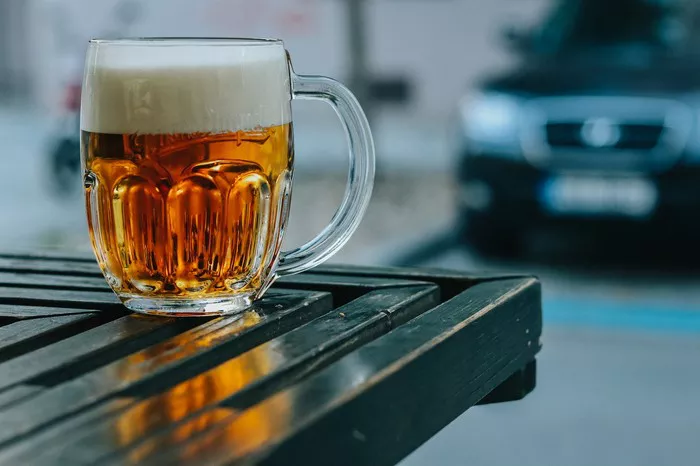Beer is one of the oldest and most widely consumed alcoholic beverages in the world. Its alcohol content, typically measured as alcohol by volume (ABV), varies significantly depending on the style, recipe, and brewing method. A beer with 5% ABV strikes a perfect balance between flavor and alcohol strength, making it an appealing choice for casual drinkers and enthusiasts alike. But what does it mean when a beer is 5% alcohol, and why is this specific range so popular?
This comprehensive guide will explore everything you need to know about 5% ABV beers. From their characteristics and appeal to popular examples and brewing methods, you’ll gain a deeper understanding of this classic beer category. Whether you’re a beer aficionado or a newcomer, this article will help you appreciate the nuances of a perfect 5% beer.
Part 1: Understanding 5% Alcohol Beers
What Does “5% Alcohol” Mean in Beer?
The term “5% alcohol” refers to the alcohol by volume (ABV) in a beer. ABV is a standard measure that indicates the percentage of pure alcohol in a given volume of liquid. For example, a 12-ounce (355 ml) bottle of beer with a 5% ABV contains approximately 0.6 ounces (17.7 ml) of pure alcohol.
This ABV range is considered moderate in the beer world. It is strong enough to deliver a noticeable effect but light enough to remain accessible for most drinkers. Many popular beer styles, such as pale ales, lagers, and wheat beers, often fall within or near this range.
Why Is 5% ABV So Popular?
The popularity of 5% ABV beers can be attributed to their balance. A beer at this strength typically maintains a harmonious blend of alcohol, flavor, and aroma without being overpowering. It is neither too light to feel diluted nor too strong to overwhelm the palate.
This moderate strength also lends itself to versatility. A 5% beer pairs well with various occasions, from casual gatherings to meals. It’s a reliable choice for those who enjoy a buzz without the risk of overindulgence. In many countries, it’s seen as the benchmark ABV for mainstream and craft beers alike.
Part 2: A Closer Look at 5% Beers
Characteristics of a 5% ABV Beer
Flavor Profile: A 5% beer typically offers a full-bodied flavor that isn’t masked by excessive alcohol. Depending on the style, these beers can range from crisp and refreshing to malty and complex.
Drinkability: These beers are approachable and easy to enjoy over extended periods. They strike a balance between being flavorful and not too heavy.
Mouthfeel: A beer with 5% ABV generally feels smooth and satisfying. It has enough substance to be noticeable but remains light enough for repeat sips.
Color and Aroma: These beers can vary widely in color and aroma, from the golden clarity of a lager to the cloudy, aromatic profile of a wheat beer.
Popular Styles of 5% Beers
Several beer styles naturally gravitate toward the 5% ABV mark. Some examples include:
Pale Lagers: Known for their crispness and light hop character.
Wheat Beers: Often brewed with a high proportion of wheat, these beers are smooth and slightly sweet.
Pale Ales: Offering a balanced bitterness, pale ales are flavorful and aromatic.
Amber Ales: Known for their malt-forward profiles with caramel and nutty notes.
The Brewing Process of a 5% Beer
Key Ingredients
The four essential ingredients in any beer—water, malt, hops, and yeast—play a pivotal role in determining the final ABV.
Water: The base of every beer, its mineral content affects flavor and mouthfeel.
Malt: Provides the sugars necessary for fermentation.
Hops: Contribute bitterness, flavor, and aroma.
Yeast: Converts sugars into alcohol and carbon dioxide, determining the beer’s ABV.
Achieving the Desired ABV
Brewers carefully control fermentation to ensure the beer reaches the desired 5% ABV. This involves balancing the malt bill (the proportion of grains used) with the fermentation duration and yeast strain.
For instance, using slightly less fermentable sugars results in a beer with moderate alcohol content but rich body and flavor. Similarly, monitoring the temperature and timing during fermentation ensures the yeast produces consistent alcohol levels.
See Also: How Bad is Expired Beer? A Comprehensive Guide
Enjoying 5% ABV Beers
Pairing Food with 5% Beers
Beers at 5% ABV are versatile companions to food. Their moderate strength complements a wide range of dishes:
Light lagers pair well with seafood, salads, and grilled chicken.
Pale ales enhance the flavors of burgers, spicy dishes, and barbecue.
Wheat beers are excellent with citrusy desserts and soft cheeses.
Ideal Occasions
5% ABV beers are perfect for:
Social events where you want a moderate buzz.
Outdoor activities like picnics or barbecues.
Meals where beer is paired with food without overpowering it.
Popular Examples of 5% ABV Beers
Many globally renowned beers fall within the 5% range. Some examples include:
Heineken (5.0%): A classic pale lager with a crisp, slightly bitter finish.
Blue Moon Belgian White (5.4%): A refreshing wheat beer with hints of orange and coriander.
Sierra Nevada Pale Ale (5.0%): A balanced pale ale with citrusy hops and malty undertones.
Samuel Adams Boston Lager (5.0%): A full-bodied lager with rich caramel notes.
These beers demonstrate the diversity and appeal of the 5% ABV category.
Conclusion
A beer with 5% alcohol represents a perfect middle ground in the world of brewing. It offers an excellent balance of flavor, drinkability, and versatility, making it a favorite among casual drinkers and enthusiasts alike.
Whether you’re exploring new beer styles or simply enjoying a classic brew, the world of 5% ABV beers is filled with variety and delight. Understanding the nuances of these beers can enhance your appreciation and help you make informed choices the next time you raise a glas.
You Might Be Interested In:
- Is Beer Good To Drink After A Workout?
- How Many Beers Can You Drink A Day?
- How Much Alcohol Is In A Bottle Of Beer?


